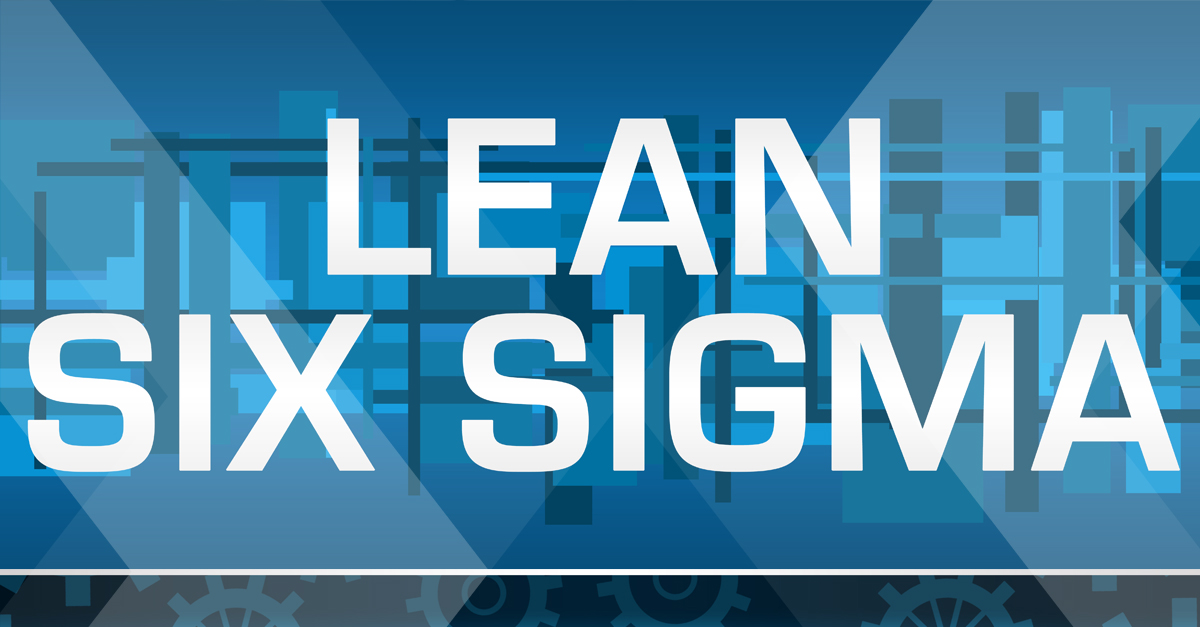Lean Six Sigma Curriculum for Odessa High School Students of Texas
Contact Us

It usually takes a lot of time to find a methodology or strategy that will help companies and individuals boost their operations and processes, so everyone wins in the situation whenever it is introduced. Fortunately, Lean Six Sigma Curriculum for Odessa High School Students of Texas offers you one option that has grown in popularity: Lean Six Sigma, as it helps students, professionals, and organizations altogether.
As a methodology that has its inception in the USA, you may be familiar with it in terms of how it assists companies and manufacturing businesses with their operations. However, not many people understand how it helps students and workers improve themselves.
Thus, before you make the decision to invest in it, we want to make sure you know what it entails to learn it.
Lean 6 Sigma is an extensive methodology that goes beyond the basic concept of process improvement. Although the primary objective of the process is to improve performance and processes in a company, the special aspect of this method is that it can be applied to any industry and how students or professionals are allowed to develop new skills to be of more value and have a new tool for their lives.
First, the reason behind its value lies in how Lean 6 Sigma does not address a specific issue or problem. It focuses on multiple issues simultaneously and ensures that people can tackle the main ones while also worrying about the continuous improvement required.
This being said, what’s the first step to take to start using the methodology?
You need to be someone who learns it accordingly so you can contribute to the company or institution you work for or are part of as a student. You can also utilize the knowledge for yourself as the right company should be able to teach the ways to implement LSS at different stages, situations, and based on needs.
Lean Six Sigma Curriculum Pros of Odessa wants to help you understand the methodology. We won’t start by offering solutions or services. Instead, we would like to walk you through the various aspects of Six Sigma and provide information to help you make informed decisions and see how a student, professional, or any individual can benefit from this.
Why Is Lean Six Sigma Important?
Many process improvement methods can be inculcated to the point of guaranteeing that you are a valuable asset. Therefore, why LSS?
The main reason: it does not work for companies only. You can obtain solutions, implement structures, and follow all the methodologies, even if the approach is more individual-based. In other words, you do not depend on an organization or business to see the benefits of Lean Six Sigma.
In the case of a company, college, high school, or any other entity, it is a way to improve their processes and performance and also start to address the issues that affect efficiency and productivity.
Let’s say you have serious production and efficiency problems. Lean Six Sigma will help you identify and fix these issues and focus on the most important areas.
What about the individual? Six Sigma is more than a process. It’s about more opportunities for work, adding value to their career, and gaining benefits that can be applied to all industries.
It will boost your personal and professional lives as you learn about problem-solving, decision-making, leadership, and more.
Because you can use the skills and knowledge you have gained during training with any company or for your personal projects, growth is imminent.
Lean Six Sigma Benefits for Individuals & Companies
As we have already mentioned, there are more benefits than those that we previously discussed, and in order to have full comprehension of how this methodology can work from all sides, we need to go over the benefits for each party.

It is a good idea to not only go over the most common ones but also to add those that many people and companies are able to get thanks to LSS:
In the case of companies, you want to keep this list at hand:
- As the primary objective, improve processes
- All types of waste will be reduced.
- Improve performance.
- Changes and additions can be controlled.
- Eliminate bottlenecks.
- Increase employee participation.
- Strive for continuous improvement.
- Customer satisfaction is the main focus.
- Learn about the processes.
- Locate the root causes of problems and find solutions.
- Strategize based on company goals and needs.

Meanwhile, individuals, regardless of which stage of life they are—high school, college, work, business owners—get the following ones:
- Career advancement.
- There are more job opportunities.
- Higher salary.
- All industries are eligible.
- Add value to your curriculum.
- Participate more in projects.
- Students have many options for college and can earn more credits.
- Get hands-on experience with quality management.
- You can improve your decision-making skills and problem-solving abilities.
- Learn leadership skills.
- Assume leadership positions and work within the company.
What Makes Lean Six Sigma So Special?
It is attractive to people that this methodology was created using a combination of Six Sigma and Lean. This helps to achieve the desired results in growth and improvement. In the case of applying it to personal projects, the principles of both methods from where it came to allow to set the structure based on needs and goals.
Six Sigma and Lean are both methodologies with a specific goal, but each leads to process improvement. In the case of being combined, Lean 6 Sigma was created in order to rival the Kaizen method and Japanese manufacturing companies in the 1980s.
LSS combines the best of 6 Sigma and Lean, but it also has specifications that distinguish it as a unique methodology, not a copy of the two.
To fully grasp the essence of Lean 6 Sigma, it is important to study the individual methodologies.

Let’s begin with Lean, as it is the simplest one when compared to Six Sigma.
Lean is a process that reduces waste. However, this goal can be quite challenging for companies who don’t understand the nature of waste or people who are barely introduced to what waste is. For starters, you can handle both physical and material elements but also intangibles.
The methodology identifies eight types of waste that practitioners must find and map while understanding their products and processes.
- Overprocessing.
- Overproduction.
- Motion.
- Defects.
- Waiting.
- Transportation.
- Inventory.
- Talent that isn’t being used.
With this in mind, Lean’s elements contribute to LSS to help us focus on waste. Five principles can be used to guide us in dealing with it.
- Identify the value.
- The value stream can be mapped.
- You can achieve flow.
- Rely on the pull.
- Strive for perfection.
Lean is a method that uses more tools and methods depending on the needs of the company and person. The same holds true when the Lean methodology is translated into LSS.
They are, however, not used often in LSS because of Six Sigma’s complement.
On the other hand, Six Sigma is a method that reduces variations and bottlenecks within a company and helps to solve problems, but when focused on individuals, they can achieve the result of not being stagnated in one process and step.
Six Sigma aims to reduce variations and ensure that you can deliver solutions way faster along with products and services. Something to keep in mind is that Six Sigma is not related to Lean unless you read Lean 6 Sigma. However, you can see an influence on the waste area.
How does Six Sigma help eliminate variation and achieve this goal? With a 5-step method called DMAIC: Define-Measure-Analyze-Improve-Control.
It also outlines five principles, which are the most important ones that LSS incorporates into it:
- Concentrate on the customer.
- Find solutions and problems.
- Reduce variations and bottlenecks.
- Increase employee engagement.
- Flexibility and adaptability.
What Is the Lean Six Sigma Training Process?
Understanding the structure of LSS and the basic principles behind each methodology will help you plan how to use it to meet your goals and needs during high school, college, or working years. You must remember that Lean 6 Sigma, like other methodologies, is divided into levels regarding learning and training.
The course outline and content will vary depending on your level of training. Skills and topics will change depending on what expertise you have or the level you want to take.
Instead of “levels,” LSS considers them to be “belts” because colors identify them, and in our case, we offer the main two: Yellow Belt and Green Belt training along with their respective certifications.
Lean Six Sigma Curriculum Pros of Odessa helps inculcate the methodology among all students and professionals in case you are a company or institution wanting to give them access to the methodology and how they can grow and contribute.
In terms of what level you should go for, we will always guide you based on your needs and stage in life as we see fit. However, we let most people know they can go only advance in the methodology by taking the corresponding belts and meeting prerequisites. For example, a yellow belt is always required to take the green belt.
In our company, you can focus on these two options:
- Training for yellow belts: Provides the basics of Six Sigma terminology, concepts, and principles, data collection, main tools, as well as how to report on issues in projects or processes.
- Training to become a green belt: This training aims to implement the methodology. It teaches the expert how to start and manage projects, DMAIC, SIPOC, and Six Sigma main tools, as well as risk mitigation and risk mitigation.
How Long Does Lean Six Sigma Training Take?
The time required to train will depend on which belt you choose and can take. A yellow belt takes about 1 to 2 weeks, while a green belt takes between 2 and 3 weeks. It can vary depending on the LSS course structure and how you manage the whole process.
It takes a short time for workers in a company to learn the new methodology, but it doesn’t take long for individuals to do so. Our company keeps it simple, but we also include the essential elements that make up the training. This means that you will be able to complete any of our training options faster than average.
A yellow belt takes between 7-10 days to complete for anyone who contacts us, while a green belt takes 14-20 days. Some people complete it in as little as 14.
On the other hand, you don’t have to worry about schedule and hours as our team will build an option that fits your busy day as a worker or adjust the learning to the availability of students and how they can have this course completed along with the rest of their subjects.
Once training is done, certification comes naturally for all belts available as students will take the exam we set and get certified once passed, so they are recognized in the methodology worldwide.
Suppose you are interested in becoming certified by our team but have not completed any of the training options. In that case, you will need to show compliance with the exam and a note from the company or experts who provided the training.
Our Leadership & Innovation Options
Along with our LSS services, we make sure to offer all individuals the chance to improve their leadership skills and bring more career advancement. This is thanks to how we implement LSS into the learning process and ensure they understand every detail accordingly.
In other cases, our innovation consulting and workshops help companies, students, and workers know the issues with their ideas and products so they can stay on top of the game and come up with better alternatives.
Our consultants will assist you in assessing projects and identifying the main issues to provide a new perspective and allow you to set a process that helps you come up with new and unique ideas.
As for leadership, students will get the chance to be the stepping stone for their teams and classmates and bring more value to themselves in the future.
Just make sure to contact us and have an in-depth look at our services for all ages, starting from high school to wanting to learn more about skills and bring changes to your life.

